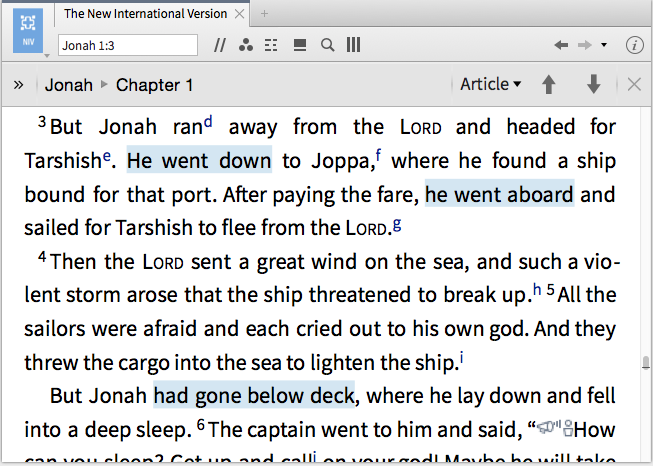What is it?
The Corresponding Words Visual Filter automatically draws on surface, lemma, and root data to automatically identify similar words on hover over or on click.
How does it work?
The new Corresponding Words Visual Filter instantly identifies everywhere repetition occurs within any of your resources. Find all the places "love," "loves," and "loved" appears within a commentary or the biblical text simply by hovering over the word you want to investigate. Or find all the places a specific lemma or root occurs within a biblical text. You can even see how the author of Jonah uses the phrase "go down" to highlight both Jonah's physical and spiritual descent from the presence of the Lord.
By identifying repetition, the Corresponding Words Visual Filter helps you draw out key themes and ideas in a passage.

Where can I learn more?